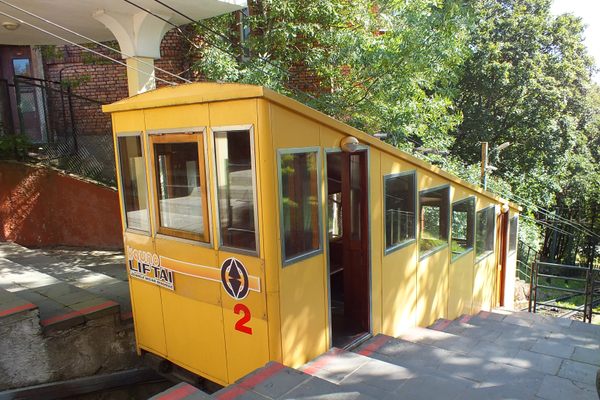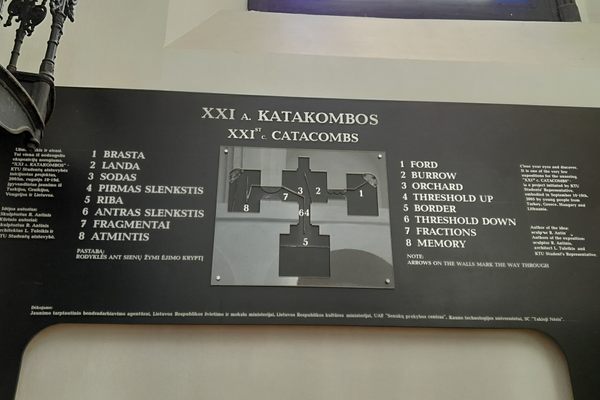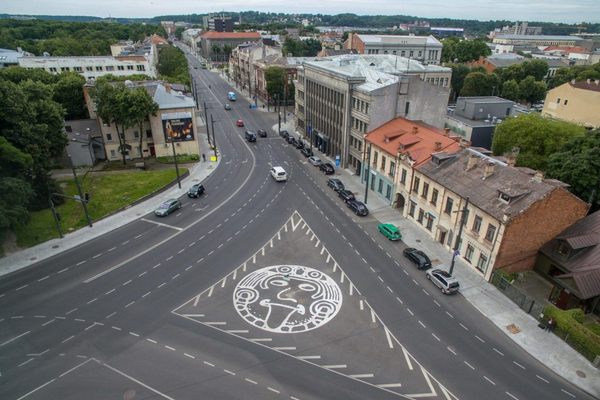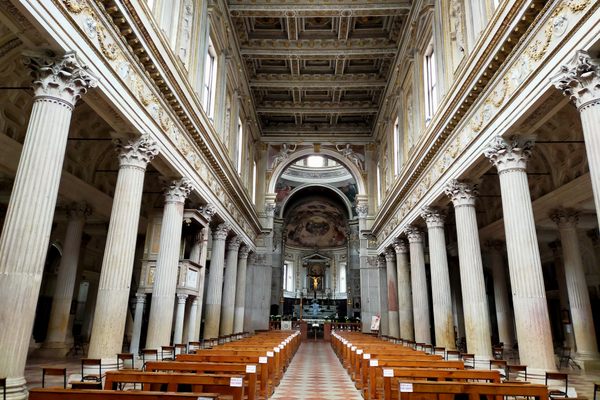Christ's Resurrection Church
This magnificent Art Deco church is a reflection of Lithuania’s turbulent history.
In 1920, the small garrison town of Kaunas unexpectedly became a capital city. Two years previously, Lithuania had taken advantage of the chaos following the Russian Revolution to declare its independence. The city of Vilnius had been the capital of the Grand Duchy of Lithuania, an enormous territory with roots reaching back to the Middle Ages, and so the new Republic of Lithuania declared its historic rights to the city—but it was also claimed by Poland, who pointed to the large number of Polish-speakers there. Vilnius (or Wilno to the Poles) changed hands a number of times in quick succession, but in 1920 a coup engineered by a Polish general put the city seemingly permanently beyond Lithuanian control.
Forced to look for a back-up to host state institutions, the government chose the central Lithuanian city of Kaunas, formerly known for its compact medieval old town and vast complex of defensive forts. The only problem was that, as a local expert recently put it, the city “lacked almost everything that other European capitals had—infrastructure, accommodation, representational buildings and inhabitants.”
Given an almost blank canvas and instructed to create a European capital, the architects of the time chose bold and inventive forms of Art Deco and modernism to express their ideas. The results were streamlined, symmetrical and smooth, often incorporating Lithuanian folk patterns and motifs in their facades.
This was Kaunas‘s Golden Age, as the population boomed and the city spread out over and beyond the surrounding hills. Most spectacular of all is the Catholic Christ‘s Resurrection Church, a colossal, brilliantly white monolith made up of perfectly straight modernist lines that gazes over the city from Žaliakalnis Hill. The structure can hold more than 5,000 people. Begun in 1934, its Latvian architect Kārlis Reisons is said to have converted to Catholicism during the project.
Kaunas was only ever referred to as “the temporary capital,” as the Lithuanian constitution continued to define Vilnius as the capital. And 19 years and 12,000 new buildings later, it lost even that status: in 1939, the Soviet Union invaded Poland and transferred Vilnius back to Lithuania, a prelude to occupying the country the following year.
After the return of Vilnius, Kaunas never again regained the title of capital, but the city is now belatedly getting attention for its remarkable architecture – in 2015, it became the first conurbation in Eastern Europe to be awarded the title of UNESCO Design City, it was recently named the EU Capital of Culture for 2022, and a recent Guardian article listed Kaunas as one of the 10 best cities in Europe for Art Deco, describing the Christ‘s Resurrection Church as “as close to a skyscraper as a church can get.”
As for the church itself, its story reflects Lithuania’s turbulent and unpredictable history in the decades since its construction. Left uncompleted upon the destruction of Lithuanian independence, it was used as a warehouse during the Nazi occupation of Lithuania, then as a radio factory under the Soviets, before work started on it again after Lithuania regained its independence–it was only finally consecrated in 2005, more than 70 years after construction first began.
Know Before You Go
The Christ’s Resurrection Church is on Žemaičių gatvė in the hilltop district of Žaliakalnis, itself largely developed during the interwar period, just outside the centre of Kaunas. It can be easily accessed by foot or public transport, but probably the most enjoyable way to reach it from the city center is by taking a short ride on the Žaliakalnis Funicular from V. Putinskio gatvė at the bottom of the hill. This is among the oldest functioning funiculars in the world, and one of two such systems in Kaunas, both constructed during its interwar boom.
Kaunas’s Art Deco and Modernist heritage is scattered throughout the city, ranging from post offices to museums to residential buildings, and even a mosque (built to serve Kaunas’s Tatar community)—your best bet for tracking down particular examples is the map and guide produced by It’s Kaunastic, which can be viewed here.















Follow us on Twitter to get the latest on the world's hidden wonders.
Like us on Facebook to get the latest on the world's hidden wonders.
Follow us on Twitter Like us on Facebook